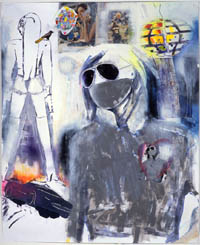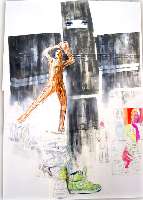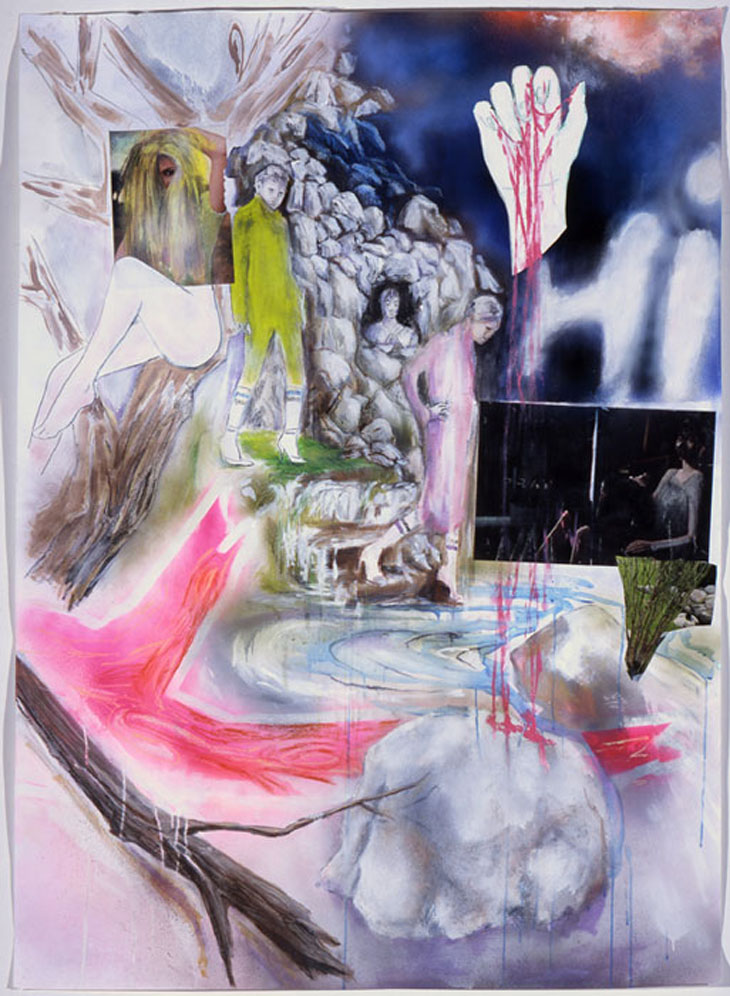

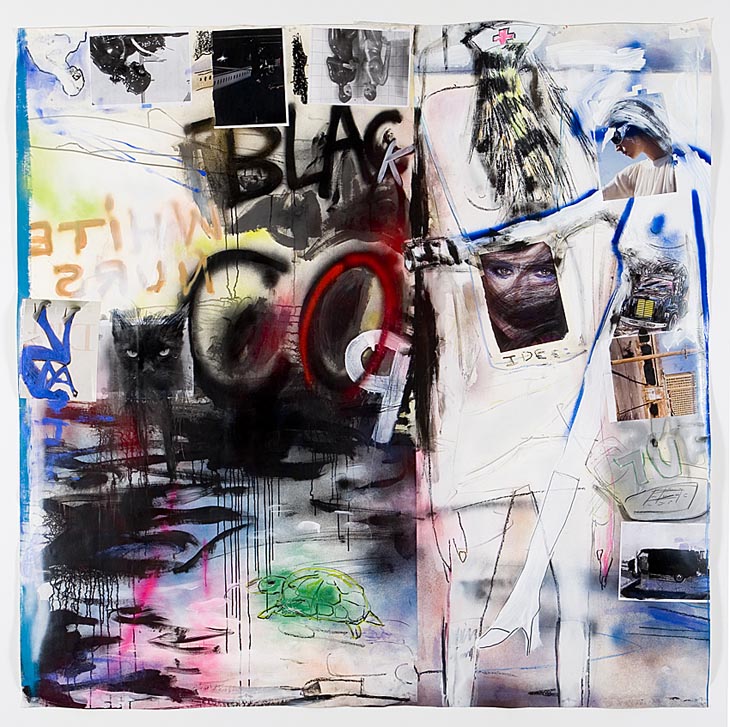
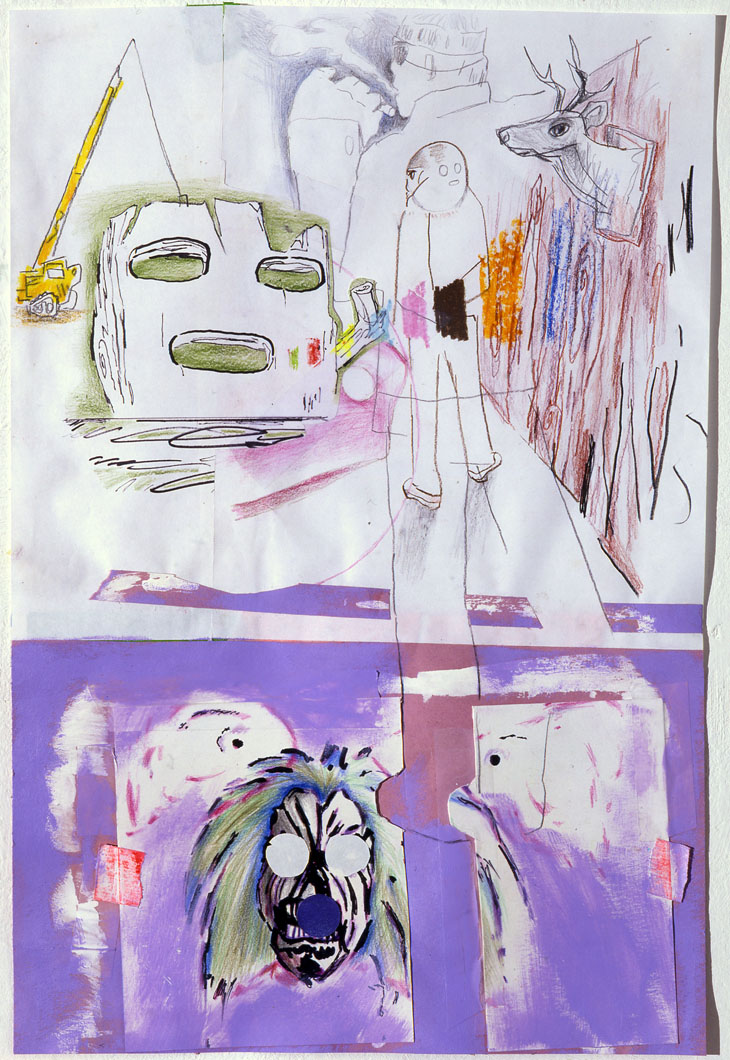

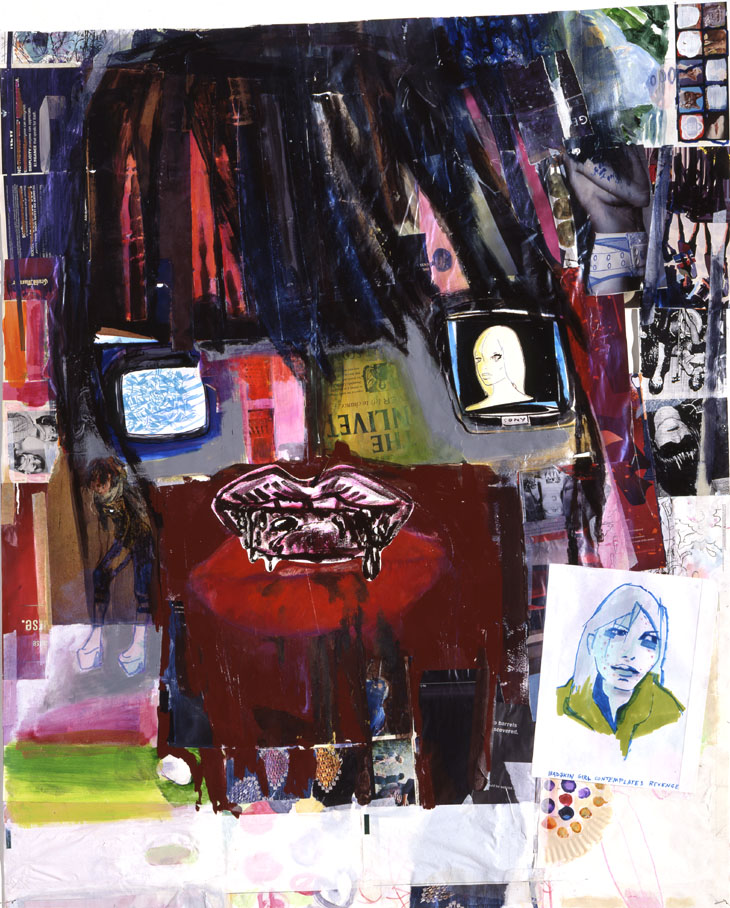
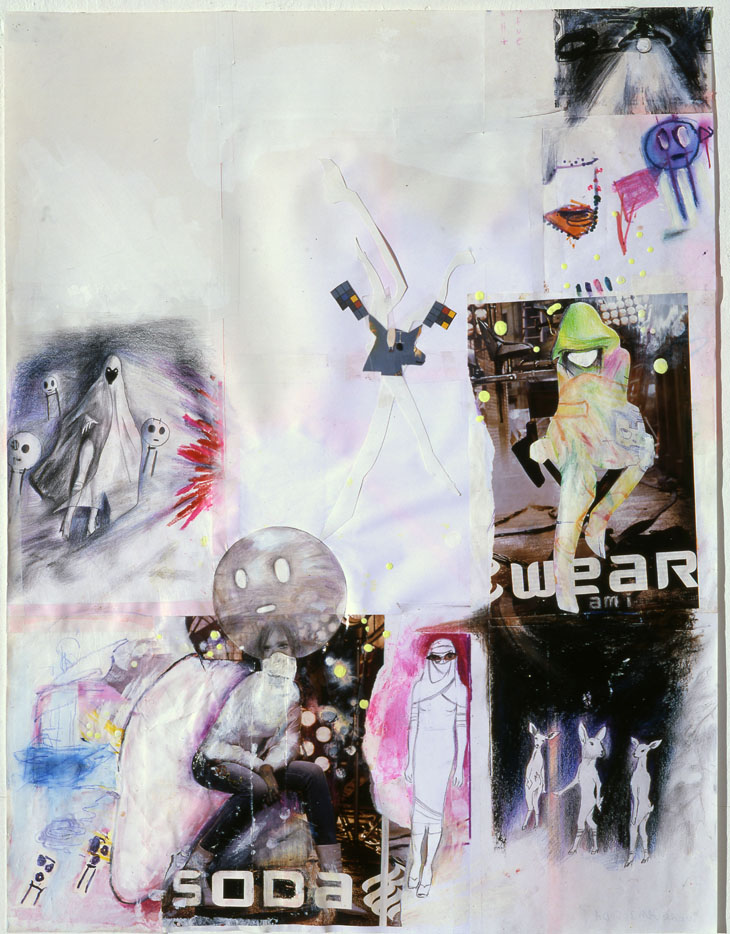

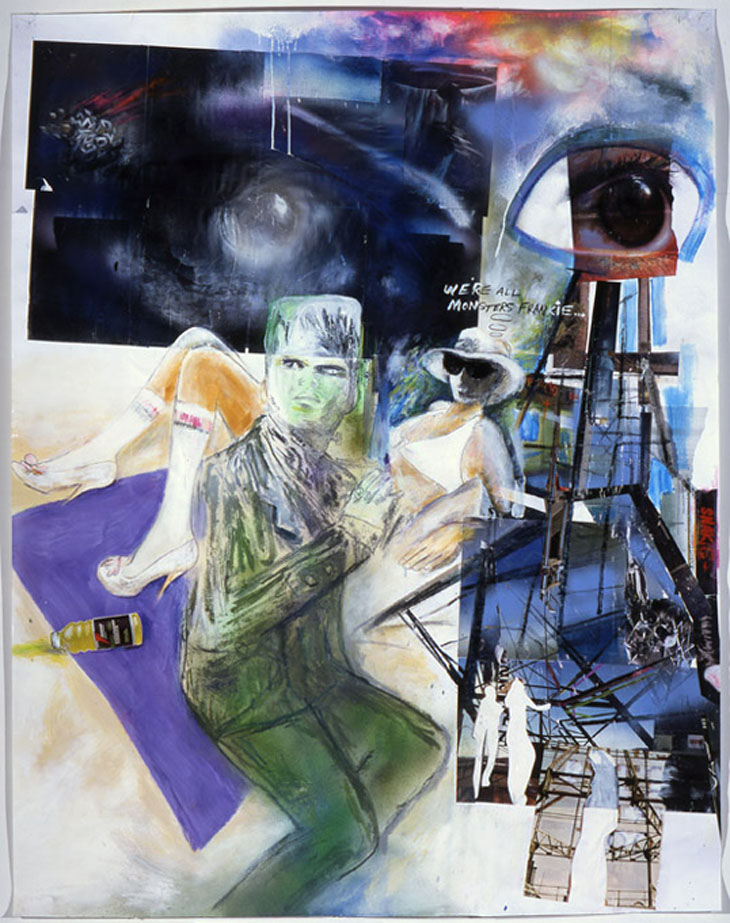
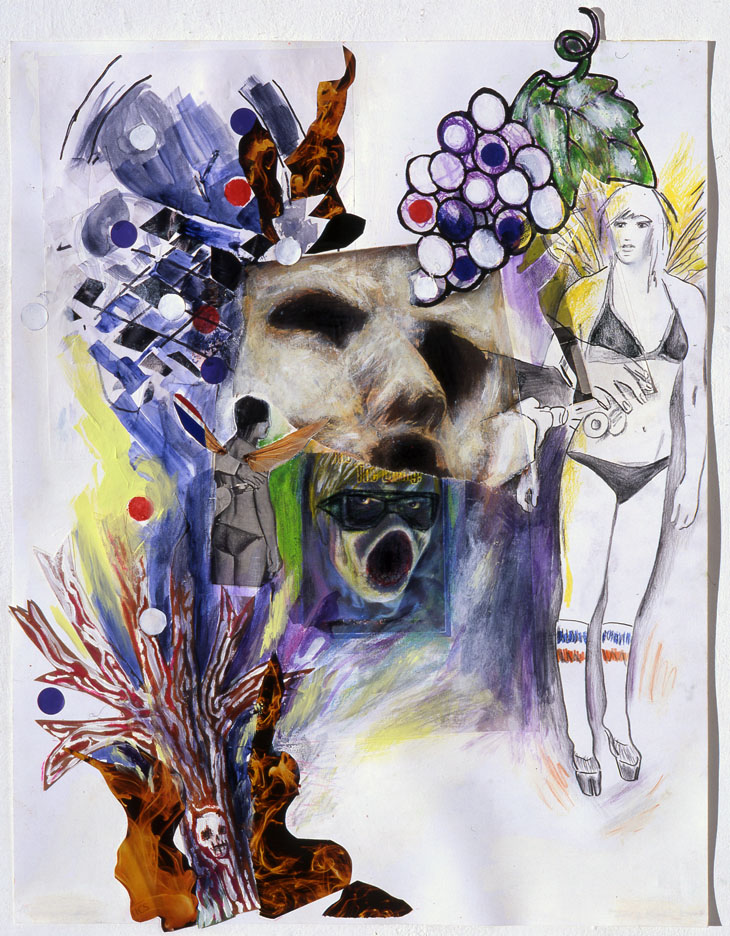
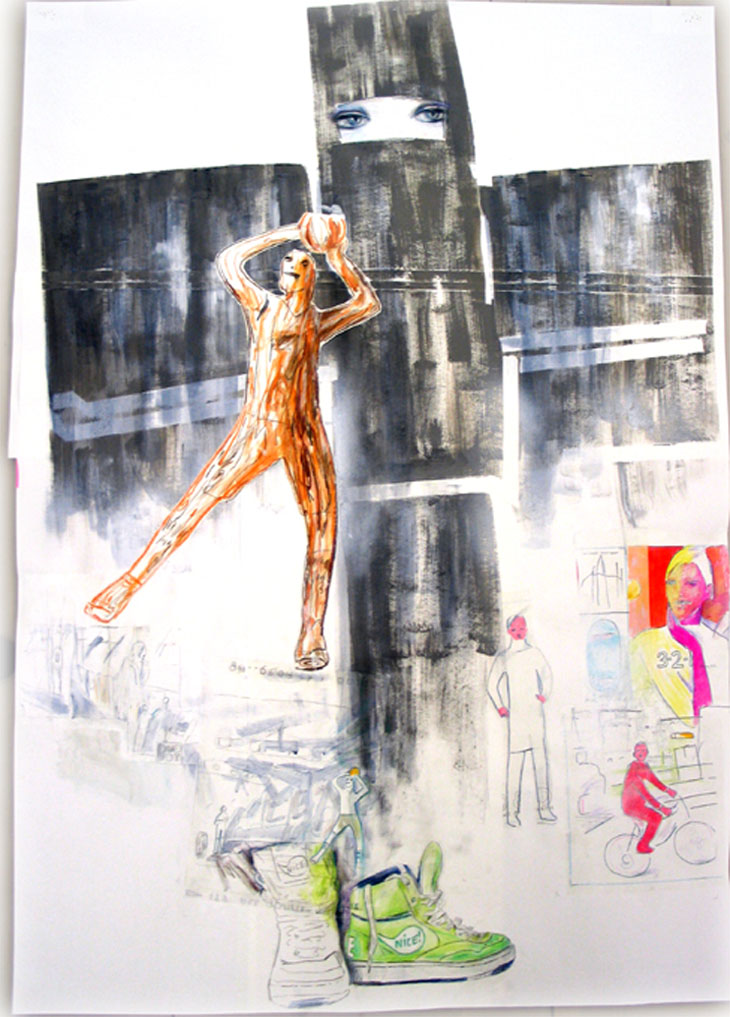
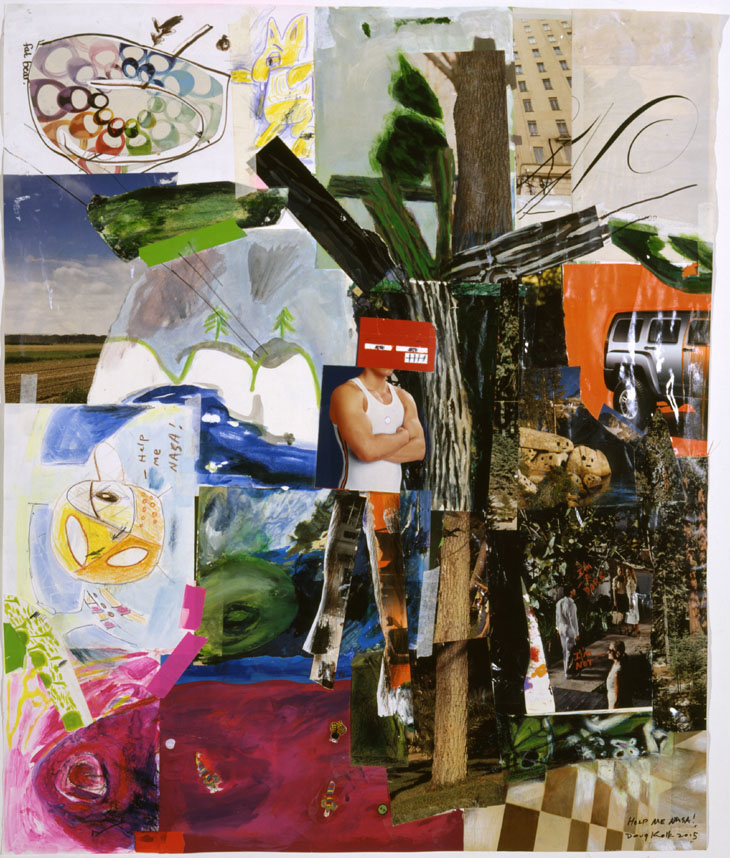
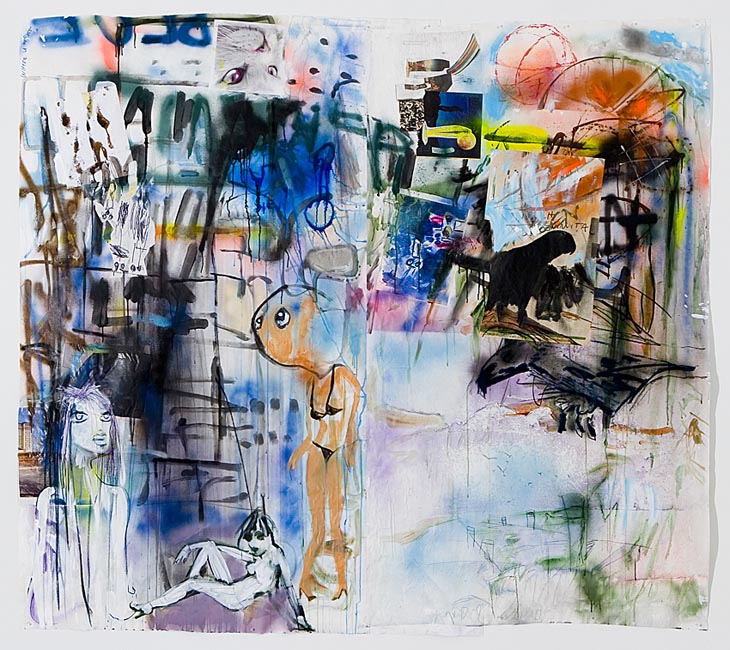
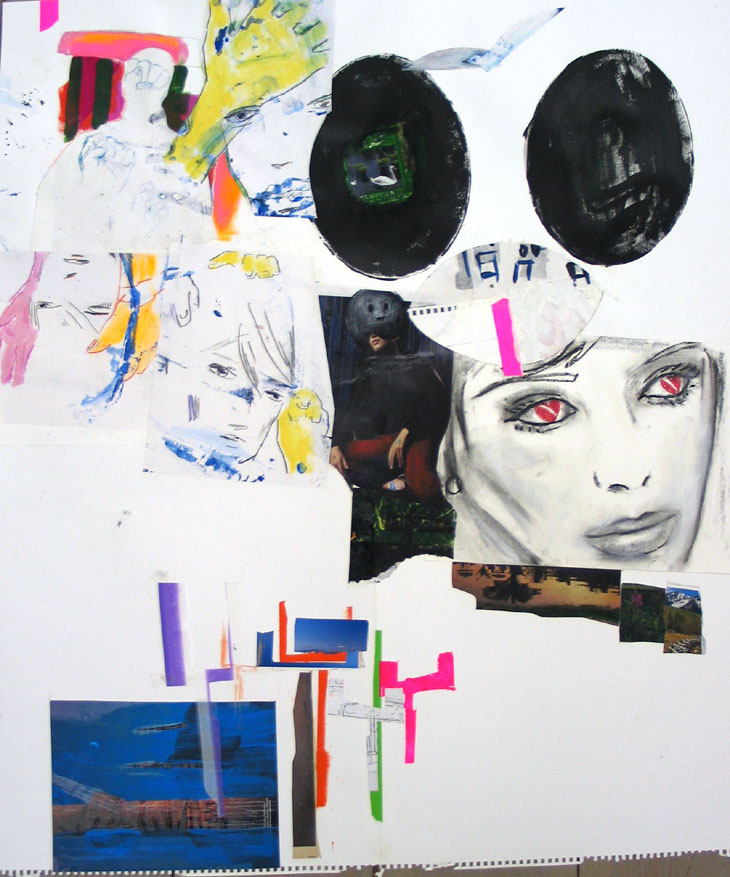
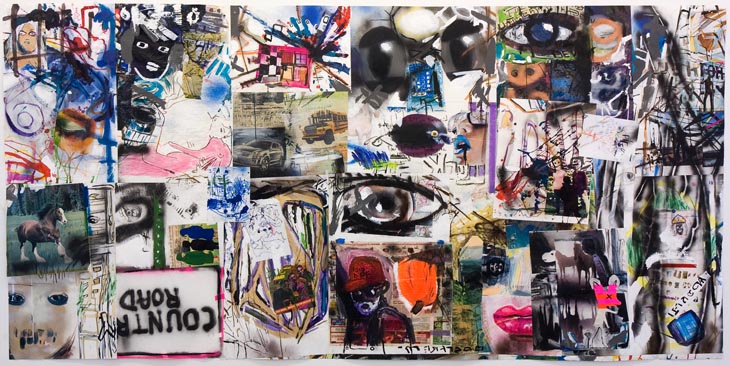
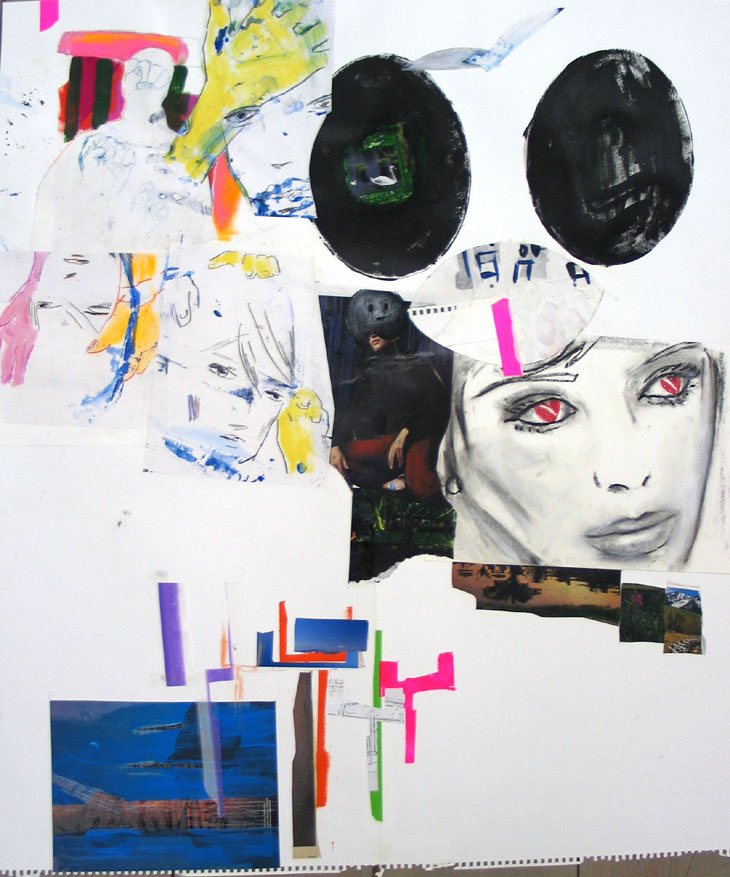
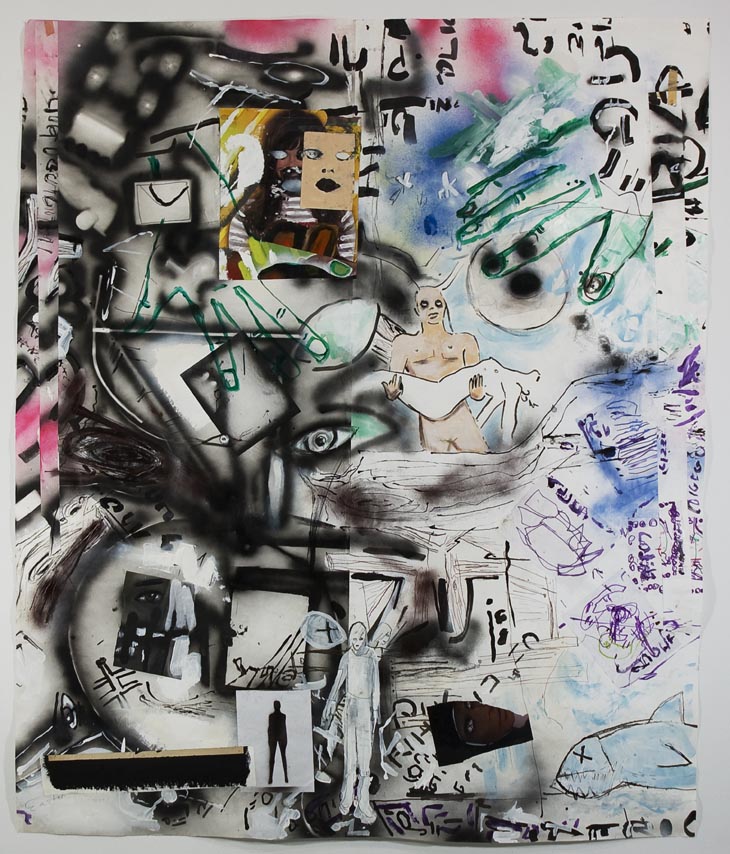

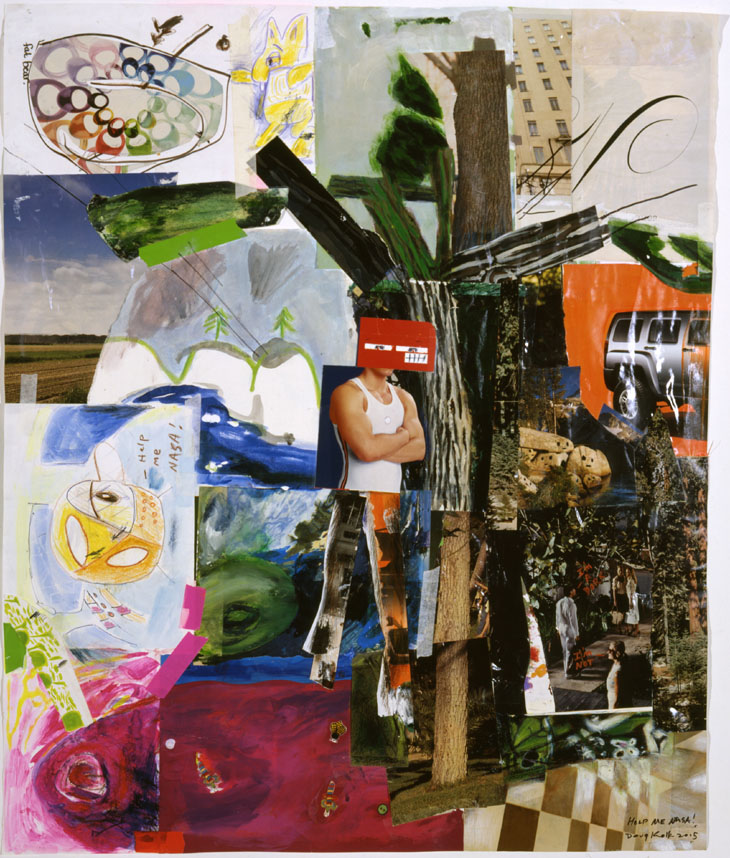
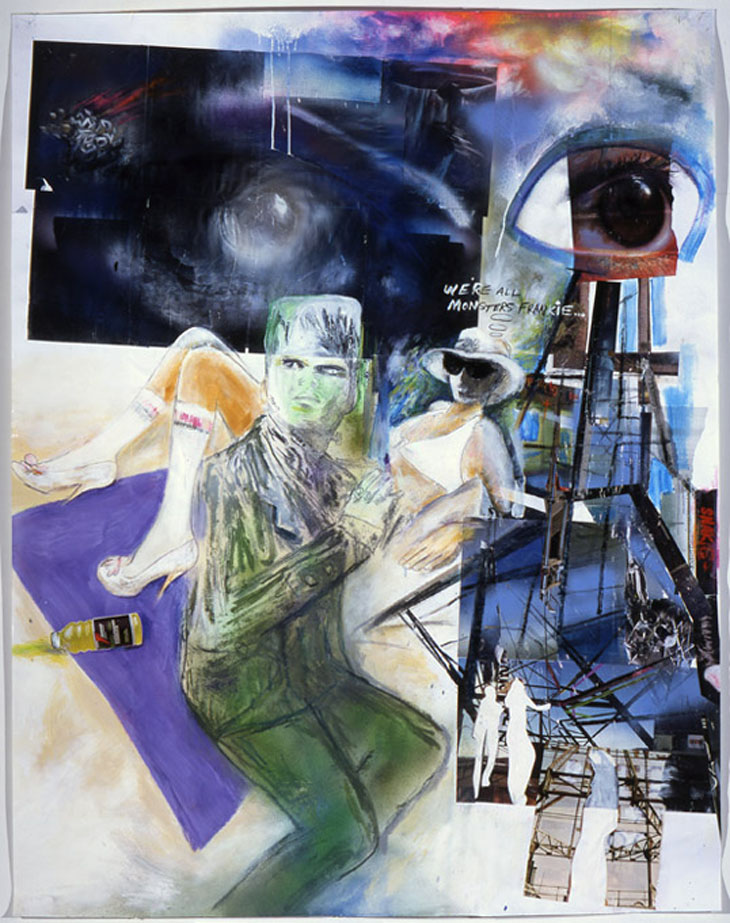
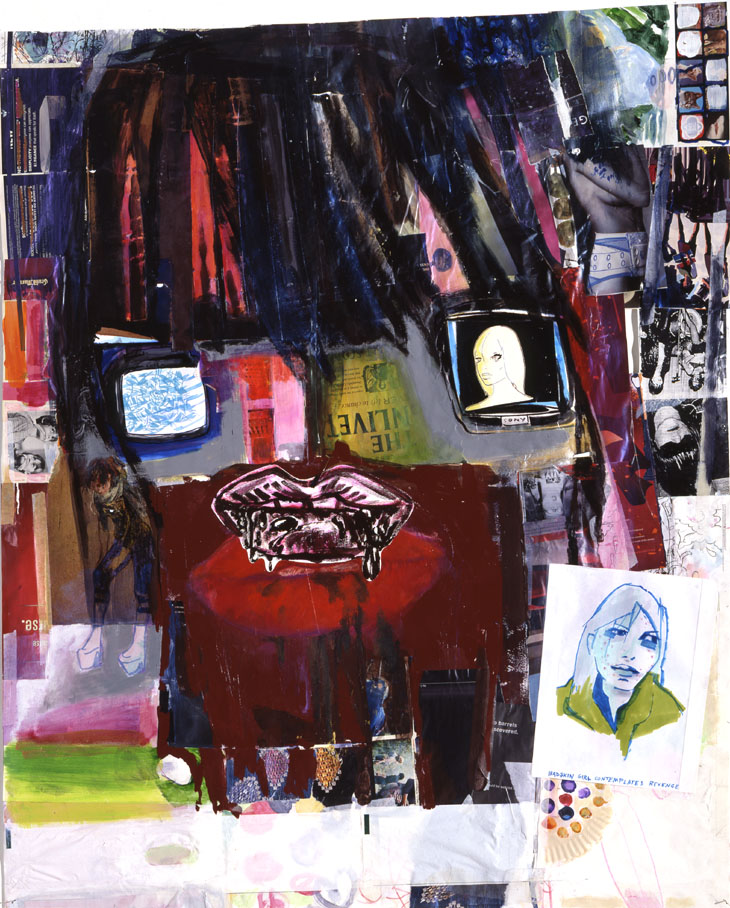
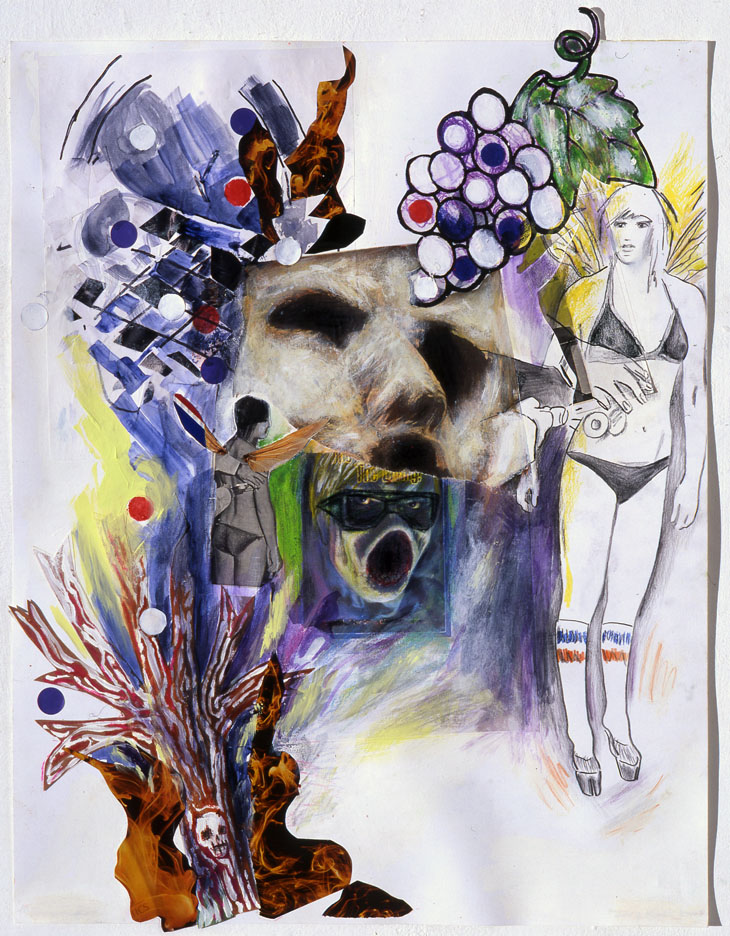
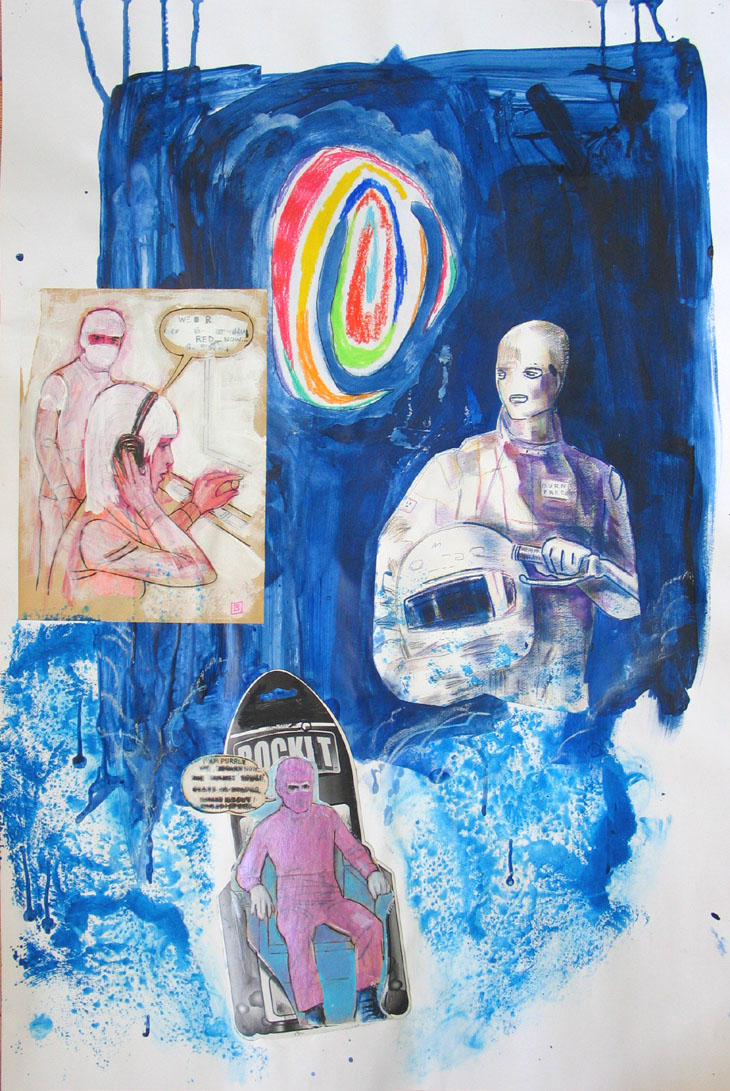
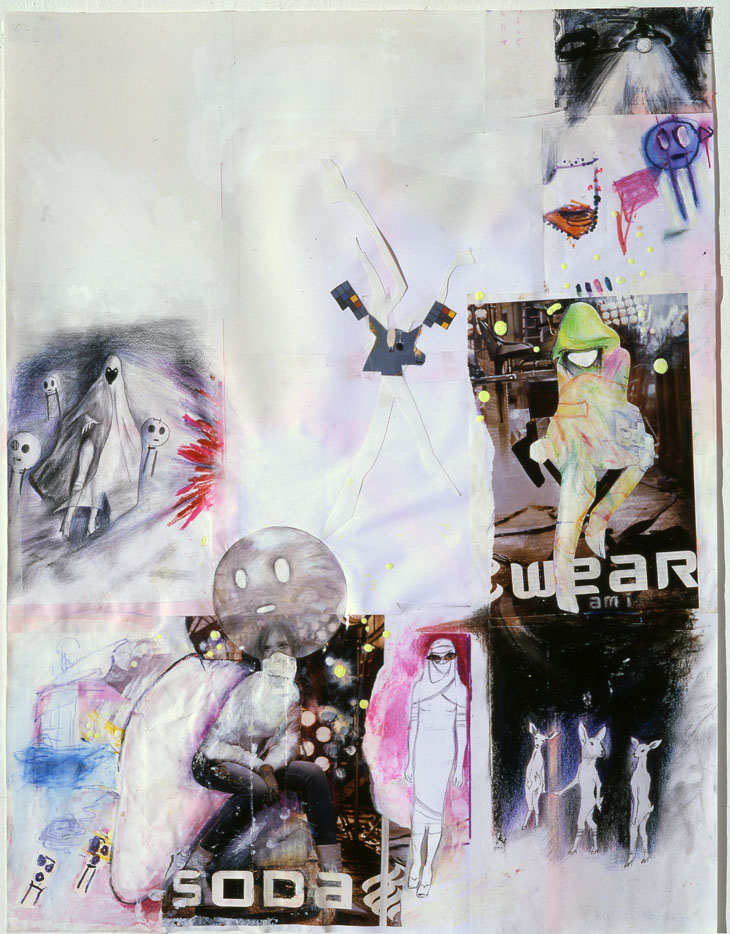
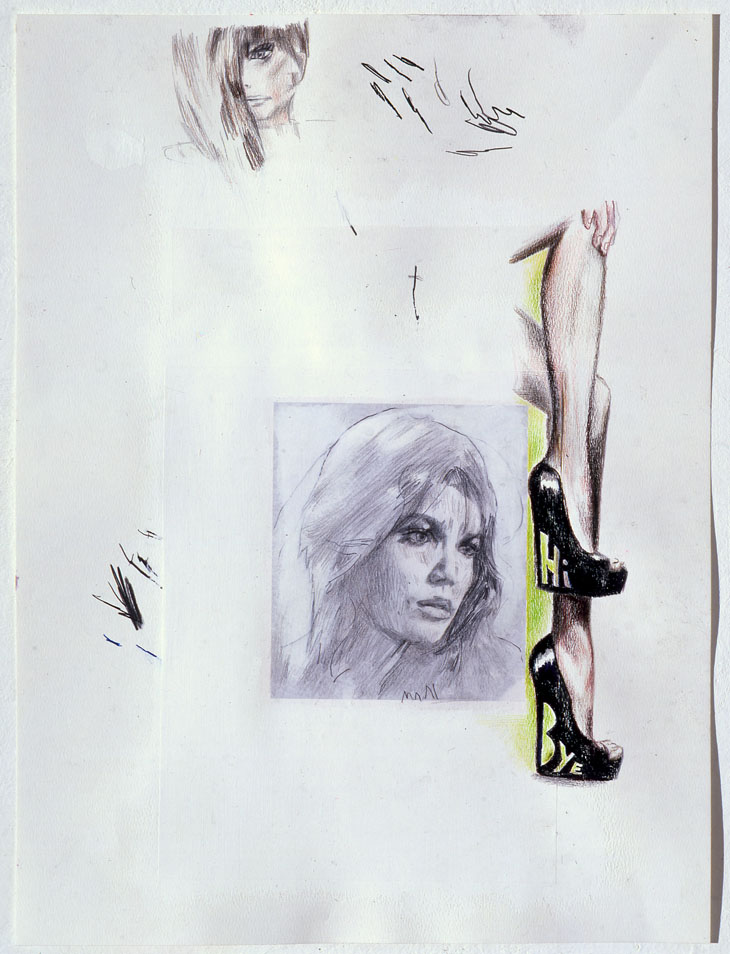
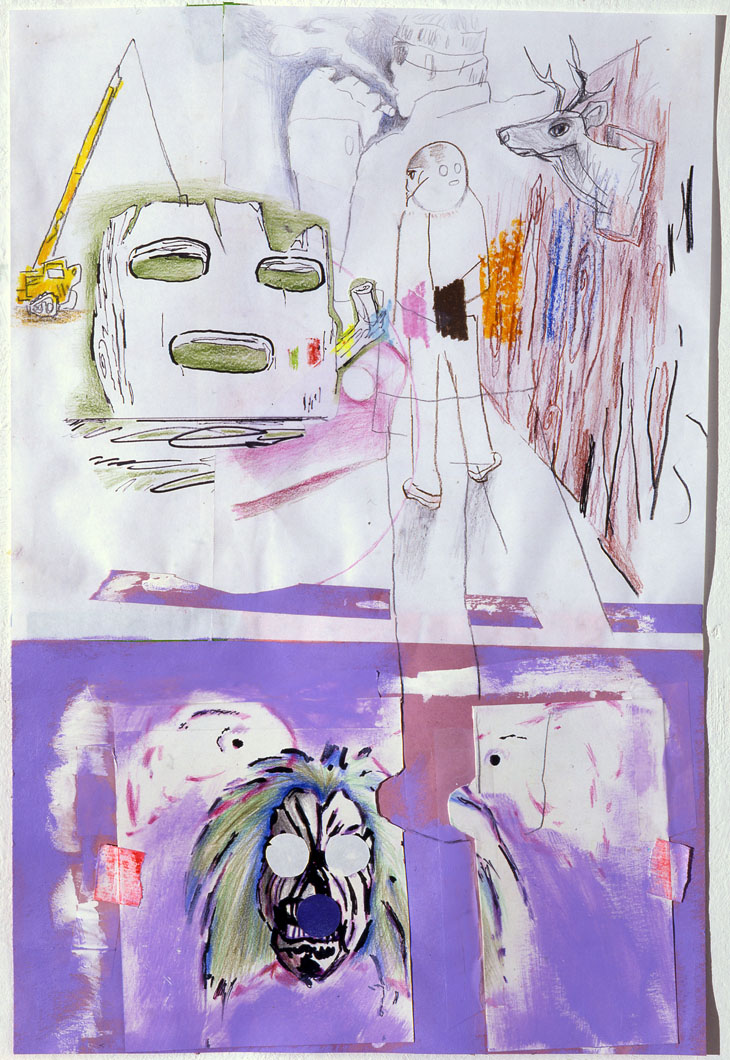
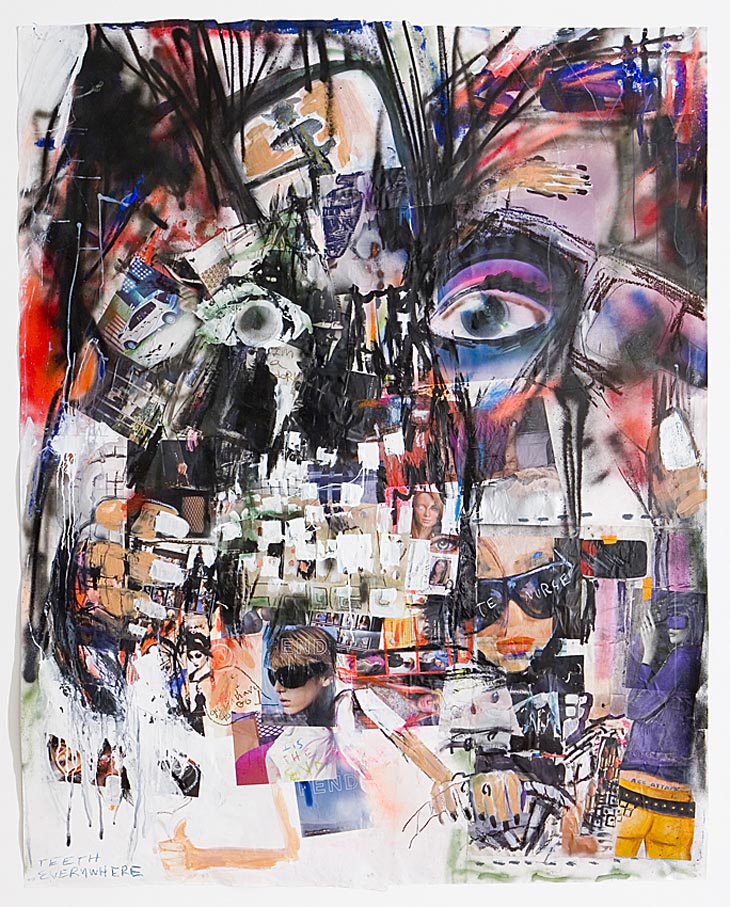
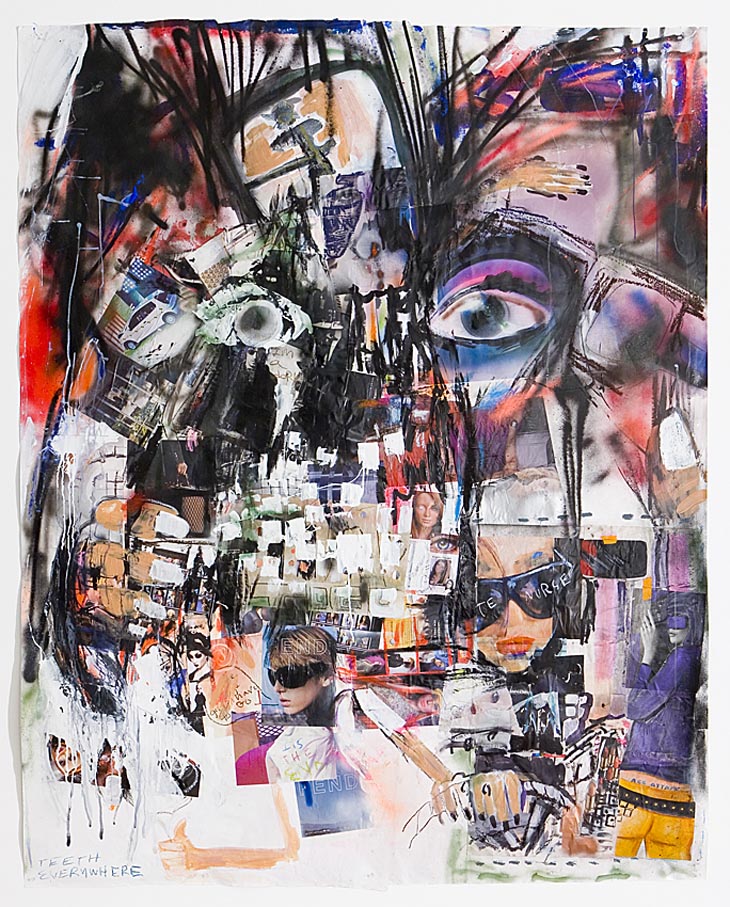
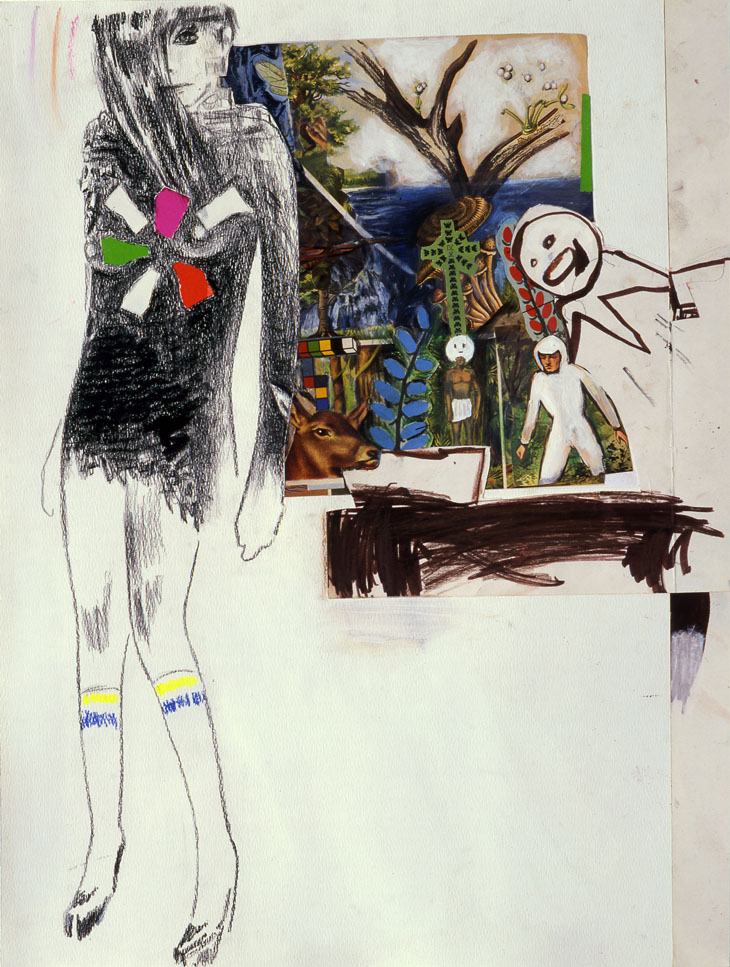
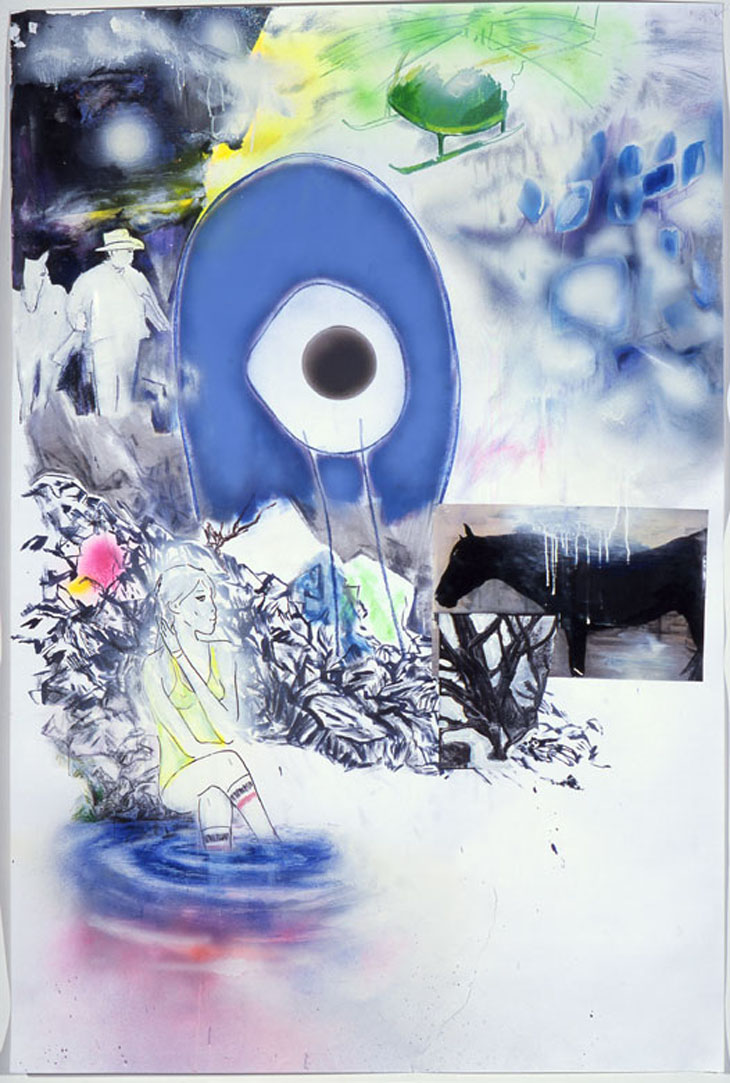
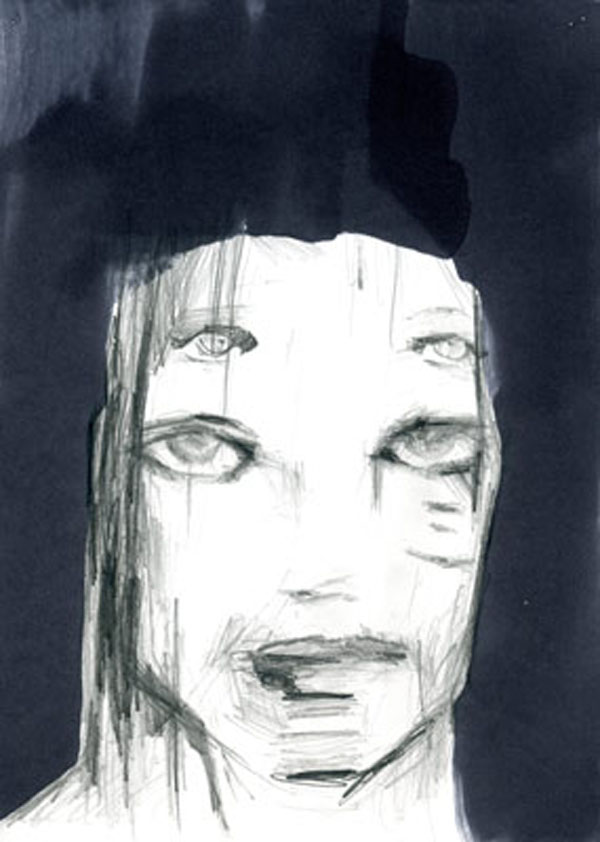
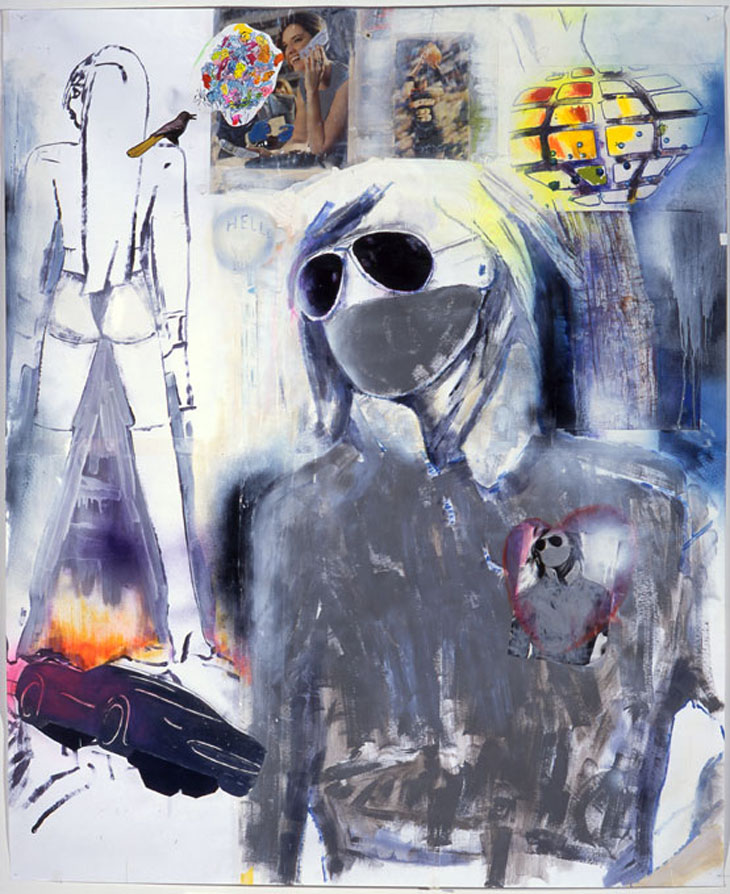
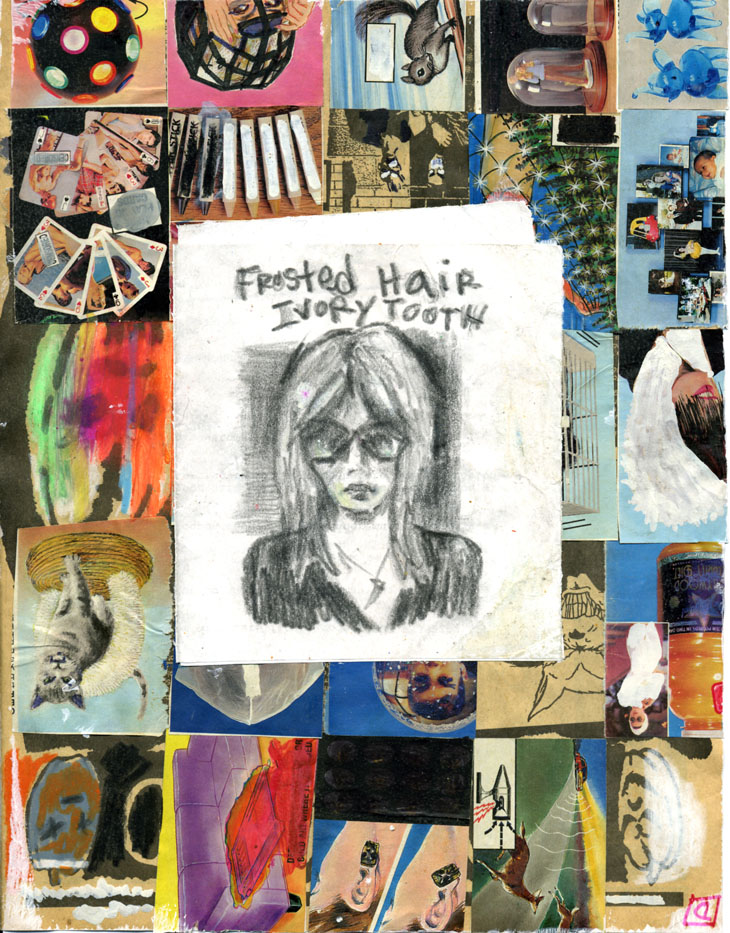
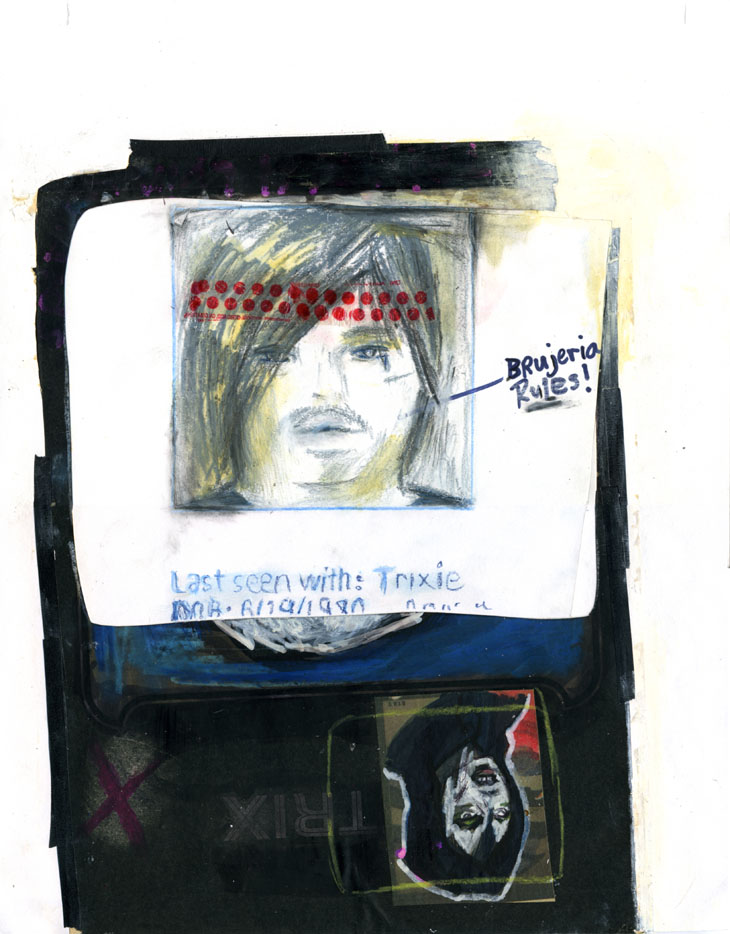
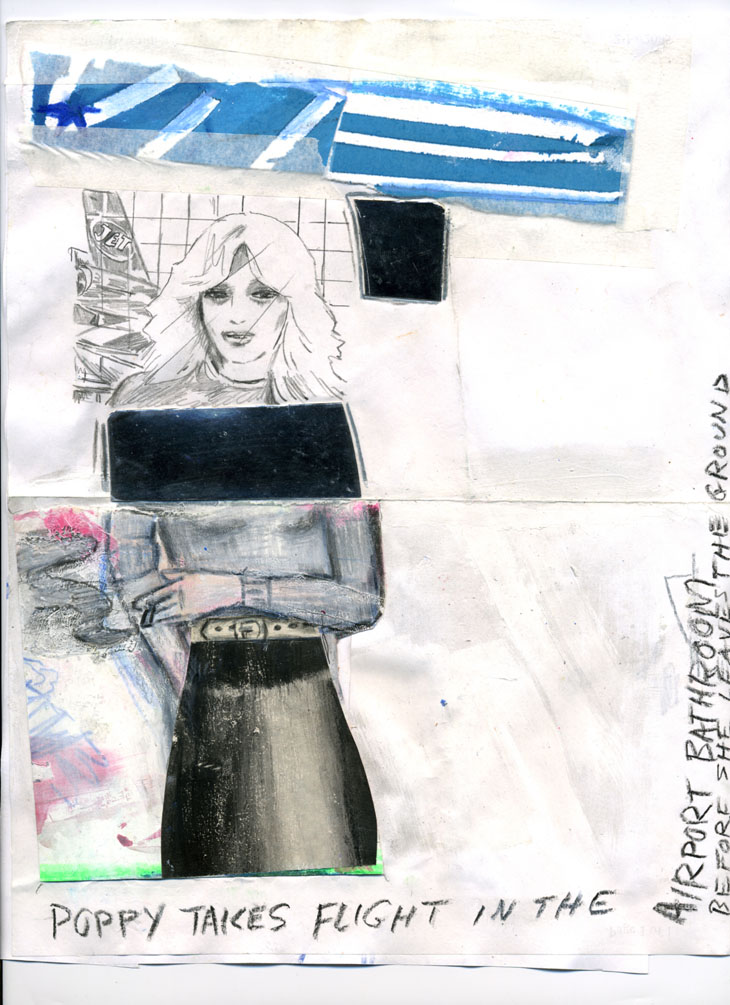

Douglas Kolk
Douglas Kolk’s collaged drawings are rendered with unfocussed obsession. His poster-sized work broadcasts a chaotic media: displaced figures, consumer logos, and fairytale ghoulies abound in his channel-surfing style abstraction. Through his fragmented compositions, Kolk captures a youth culture zeitgeist: his images presenting fragile and fluctuating notions of identity and corrupted innocence. Drawing influence from comic books and pulp novel covers, Kolk’s drawings are pieced together as narrative frames, some, such as Poppy Takes Flight… and Last Seen With Trixie, offer clearly defined stories while others meld in an associative blitzkrieg of confetti information. Illustrating a psychological terrain where haircuts and trainers take equal footing with still-lives, serial killers, and film stills, Kolk offers a discomfiting reassurance in contemporary anxiety. Drafted with disparate drawing styles, Kolk’s work physically encapsulates this sympathetic syndrome. Vying between OCD and ADS, forms range from the poetically detailed to the violently doodled; his sentiments overlapping in precarious schizophrenic balance. Positing media clippings with delicate sketches and bold painterly abstraction, Kolk contrives an alluring slippage between reality and distortion, his work entrancing with confessional intimacy, disclosing compulsive beauty in the hollow and salacious.
.
Replicating the sensation of bombardment that is a common experience of contemporary urban life, Douglas Kolk’s collages are charged with dynamic and contradictory visual material. Images of female beauty jostle for space with jagged drawn line; sprayed colour bumps up against collaged newspaper. The overall effect is one of clamour and confusion, with certain thematic interests that bind the apparently divergent elements together. Kolk’s work seems preoccupied above all with visual ideas that relate to personal identity, whether they be graffiti tags, repeated rows of human eyes, or the faces of fashion models, and their juxtaposition in fragmentary form on the surfaces of his works is a way of deferring that identity’s resolution. No-one, in Kolk’s work, is fully whole.
ext by Ben Street
In Dirty Hands, faces snipped from newspapers are half-completed in graphic lines; the human body appears as broken shards, silhouettes or metonymic parts: teeth, eyes, arms. The preponderance of text in his work demands that Kolk’s work be read, rather than absorbed as a work on this large scale usually is; the act of looking is also one of internal comparison, the revelation of visual rhymes. In Country Road, eyes and lips switch places through visual kinship; the road of the title is driven by cars, trod by horses. Kolk’s work embodies a world where fixed meanings lose their moorings; everything is like something else, and nothing is any one thing at any one time.
Douglas Kolk’s collaged drawings are rendered with unfocussed obsession. His poster-sized work broadcasts a chaotic media: displaced figures, consumer logos, and fairytale ghoulies abound in his channel-surfing style abstraction. Through his fragmented compositions, Kolk captures a youth culture zeitgeist: his images presenting fragile and fluctuating notions of identity and corrupted innocence. Drawing influence from comic books and pulp novel covers, Kolk’s drawings are pieced together as narrative frames, some, such as Poppy Takes Flight… and Last Seen With Trixie, offer clearly defined stories while others meld in an associative blitzkrieg of confetti information. Illustrating a psychological terrain where haircuts and trainers take equal footing with still-lives, serial killers, and film stills, Kolk offers a discomfiting reassurance in contemporary anxiety. Drafted with disparate drawing styles, Kolk’s work physically encapsulates this sympathetic syndrome. Vying between OCD and ADS, forms range from the poetically detailed to the violently doodled; his sentiments overlapping in precarious schizophrenic balance. Positing media clippings with delicate sketches and bold painterly abstraction, Kolk contrives an alluring slippage between reality and distortion, his work entrancing with confessional intimacy, disclosing compulsive beauty in the hollow and salacious.






